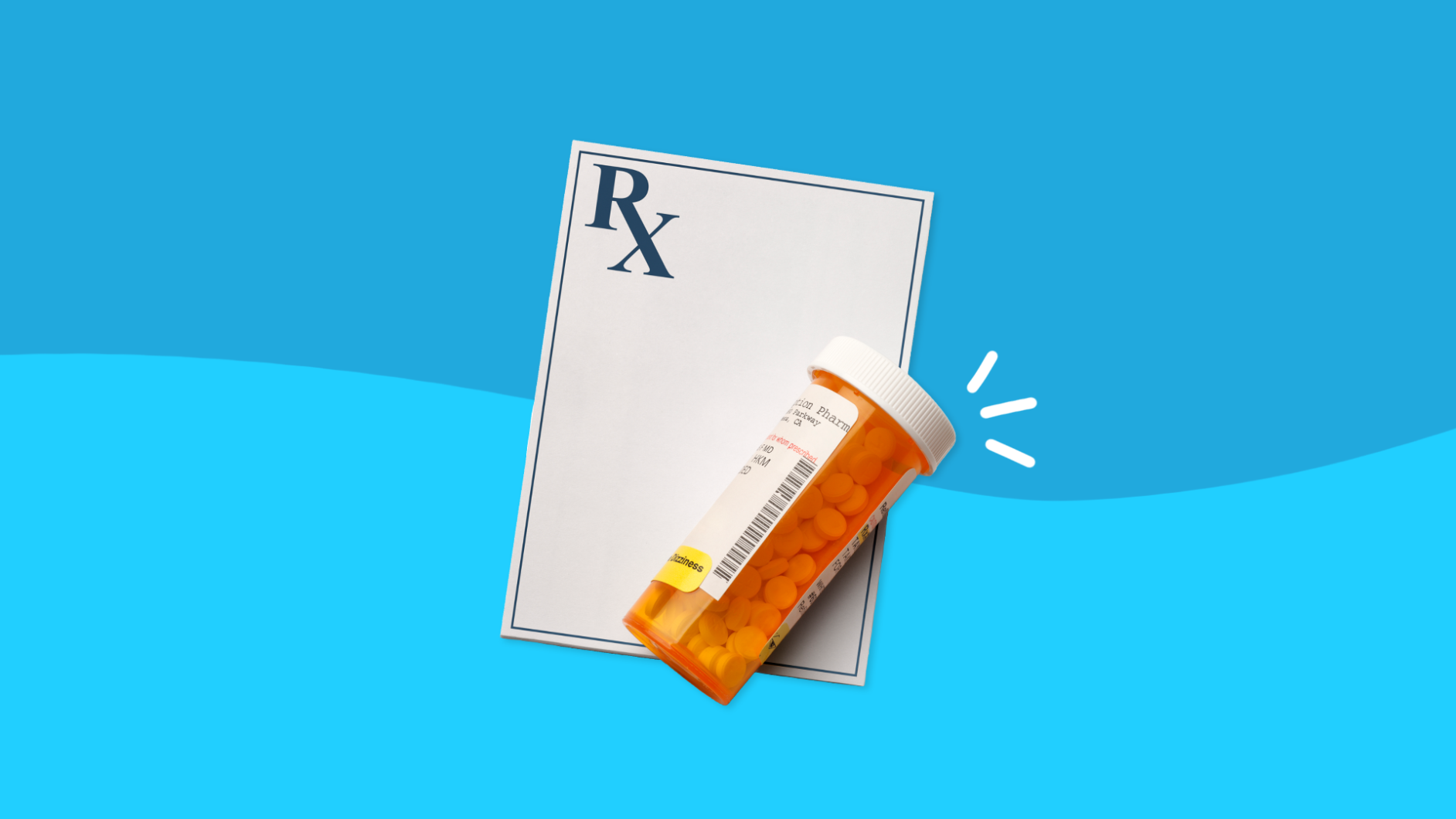Meloxicam side effects | Headaches | Weight gain | Overdose | How long do side effects last? | Warnings | Interactions | How to avoid side effects
Meloxicam is a generic prescription drug that relieves pain and swelling caused by osteoarthritis, rheumatoid arthritis, and juvenile rheumatoid arthritis. Also found in pharmacies under the brand names Mobic, Vivlodex, Qmiiz, and Anjeso, meloxicam can be taken by mouth as a tablet, capsule, disintegrating tablet, or oral suspension, or it can be injected directly into the bloodstream by a healthcare professional.
As a nonsteroidal anti-inflammatory drug (NSAID), meloxicam belongs to the same family of the well-known drugs aspirin, ibuprofen, and naproxen. However, meloxicam is not just an amped-up version of Advil or Aleve. People should be aware that meloxicam as a prescription NSAID comes with more serious risks, side effects, warnings, and drug interactions than ordinary over-the-counter NSAIDs.
RELATED: Learn more about meloxicam | Get meloxicam discounts
Common side effects of meloxicam
The most common side effects of meloxicam (affecting 2% or more of people taking the medication) are:
- Abdominal pain
- Headache
- Flu-like symptoms
- Dizziness
- Nausea
- Diarrhea
- Sore throat
- Fluid retention
- Accidents and falls
- Constipation
- Insomnia
- Upper respiratory tract infection
- Urinary tract infection
- Joint pain
- Back pain
- Stomach upset
- Flatulence
- Rash
- Itching
- Urination problems
- Vomiting
Serious side effects of meloxicam
Meloxicam can produce serious and even life-threatening side effects, particularly if used in high doses or for an extended time. These include:
- Heart attack
- Stroke
- Blood clots
- High blood pressure
- Congestive heart failure
- Bleeding, ulcers, or perforations in the stomach or intestine
- Liver damage or liver failure
- Kidney dysfunction or kidney failure
- Anemia
- Bleeding problems
- Asthma attacks in people with asthma
- Severe and potentially life-threatening allergic reactions such as anaphylaxis, trouble breathing, or severe skin reactions
Serious side effects will require immediate medical attention.
Meloxicam and headaches
Headaches are a common, less serious side effect of meloxicam. In two 12-week clinical trials in patients with osteoarthritis or rheumatoid arthritis, between 5.5% to 8.3% of people taking meloxicam reported headaches. In six-month trials, 2.6% to 3.6% of people taking meloxicam experienced headaches. However, headaches as a side effect do not seem to be dose-dependent.
Meloxicam and weight gain
Weight gain and loss are uncommon side effects of meloxicam, observed in less than 2% of people taking it. However, fluid retention (edema) is a common side effect, reported in 0.6% to 4.5% of people taking meloxicam in clinical studies. Left untreated, edema can lead to cardiovascular problems including congestive heart failure in vulnerable people. Fluid retention can be partly identified by an unexplained rise in body weight, so involuntary weight gain should be reported to the prescribing physician or other healthcare professional.
Meloxicam overdose
As an NSAID, a meloxicam overdose can lead to serious health issues, evident from more common experiences of people overdosing on common over-the-counter NSAIDs, such as aspirin or ibuprofen. The most common symptoms of an NSAID overdose are:
- Lack of energy
- Drowsiness
- Nausea
- Vomiting
- Stomach pain
- Blurred vision
- Dizziness
- Bloody vomiting
- Black or tarry stools
A severe overdose can result in high blood pressure, kidney failure, seizures, coma, respiratory distress, and death. People with any symptoms of NSAID overdose will require immediate medical attention.
How long do meloxicam side effects last?
Most of the common side effects of meloxicam are temporary and will abate after the drug is discontinued. Unfortunately, meloxicam stays in the body much longer than other NSAIDs, so side effects may linger a day or two after the last dose. More serious side effects, such as ulcers and gastrointestinal bleeding, can take much longer to resolve, even after discontinuing meloxicam.
Meloxicam contraindications & warnings
Like all prescription NSAIDs, meloxicam has risks that may outweigh the benefits for some people. The FDA determines if a medicine is safe for certain people by issuing contraindications and warnings. When a medicine carries a high risk for hazardous adverse effects in certain people, it is contraindicated for those people—it is never to be used in those patients. When a medication is riskier than normal in some patients, the medication comes with a warning. It is okay to take the medicine, but use and dosage will require monitoring or modification.
Allergies
Meloxicam should never be used in people with known allergies to meloxicam or other NSAIDs.
Coronary artery bypass graft (CABG) surgery
Better known as “bypass surgery” or “coronary bypass,” CABG surgery restores normal blood flow to the heart’s muscles by either diverting a coronary artery or using a blood vessel graft to “go around” an obstructed coronary artery. Because meloxicam can cause blood clotting and cardiovascular problems, it is never used in the period leading up to bypass surgery or in the weeks after.
Asthma
Some people have aspirin-sensitive asthma, also known as aspirin-exacerbated respiratory disease (AERD). When given aspirin or other NSAIDs, those with AERD react with classic asthma symptoms, such as wheezing and coughing. This reaction can be fatal. Meloxicam should never be given to people with aspirin-sensitive asthma. Other people with asthma will require caution and monitoring just in case there is a serious reaction.
Other medical conditions
Meloxicam and other NSAIDs may worsen existing medical conditions, so these medications require caution and monitoring when prescribed to people with risk factors such as:
- Heart disease
- Congestive heart failure
- Blood clots and stroke
- Ulcers or bleeding in the digestive system
- High blood pressure
- Fluid retention
- Bleeding disorders
- Kidney problems
- Liver disease and
- Poor general health
Children
Meloxicam is FDA approved to treat juvenile rheumatoid arthritis in children 2 years of age and older. In three clinical trials, children experienced the same types of side effects as adults, but at a higher rate.
Seniors
People 65 years and older are at a higher risk for side effects, so they may be started at a lower dose and monitored.
Fertility
Meloxicam may cause a delay in ovulation, so women who are trying to get pregnant or undergoing fertility treatment may not be prescribed meloxicam.
Pregnancy
Meloxicam is not to be taken by pregnant women after 30 weeks because NSAIDs affect the heart development in the unborn baby. There is not enough research to know if meloxicam is safe for women or an unborn baby in the first 30 weeks of pregnancy. Women who are pregnant or considering getting pregnant should discuss the risks with a doctor.
Breastfeeding
It is not certain if meloxicam is safe to take while nursing or how much passes into human breast milk. Nursing mothers should seek medical advice before taking meloxicam.
Dependence
Meloxicam does not create dependence nor does it require a tapered dose when stopping the medication.
Meloxicam interactions
Taking two or more drugs can sometimes lead to trouble. Meloxicam is no exception. Because of the way it works, meloxicam affects many organs and systems in the body, particularly the blood, stomach, and kidneys. There are, then, a variety of ways that meloxicam can interact with other medications and foods. Here is how to make sense of all of them:
Meloxicam and NSAIDs
As previously stated, meloxicam is an NSAID. When taken with other NSAIDs, including ordinary aspirin or ibuprofen, the risk of side effects increases due to their additive effects. This is because all NSAIDs more or less cause similar side effects, particularly gastrointestinal problems including stomach pain, bleeding, and ulcers. As a general rule, taking two or more NSAIDs should be avoided except under the advice of a doctor. Taking multiple types of NSAIDs will delay it leaving your body and put you at a higher risk of side effects. Acetaminophen, the active ingredient in Tylenol, can acutely be substituted for NSAIDs for treating pain or fever, but not long-term when taking meloxicam.
Meloxicam and bleeding
Meloxicam interferes with the body’s ability to form blood clots. So, when meloxicam is taken with blood thinners such as warfarin, there is an increased risk of bleeding episodes, particularly stomach bleeding. This is because NSAIDs also target COX-1receptors, which protect the mucus lining of the stomach. A physician will need to monitor blood coagulation in any person taking meloxicam with blood thinners. SSRIs (antidepressants), SNRIs (antidepressants), and some anticancer drugs also increase the risk of bleeding and gastrointestinal bleeding when combined with meloxicam.
Some drugs specifically raise the risk of gastrointestinal bleeding, including corticosteroids, some osteoporosis drugs (bisphosphonates), and some anticancer drugs. These, too, need to be used carefully when combined with meloxicam.
There are several over-the-counter dietary and herbal supplements that also interfere with blood clotting, such as fish oil, garlic, ginkgo, willow bark, krill oil, and saw palmetto. A healthcare professional can provide sound advice about combining these supplements with meloxicam.
Meloxicam and blood pressure
Elevated blood pressure is a common side effect of meloxicam, so taking meloxicam may counteract the effects of medications intended to lower blood pressure. Also, taking meloxicam with ACE inhibitors and angiotensin II receptor blockers (ARBs)—two common types of blood pressure medications—increases the risk of kidney problems and elevated potassium (hyperkalemia) in seniors or people with existing kidney problems.
Several types of drugs also raise blood pressure. Combining any of them with meloxicam raises the risk of high blood pressure:
- Caffeine, alcohol, and nicotine
- Stimulants
- Antidepressants
- Asthma medications
- Decongestants
- Birth control pills
- Migraine medications
- Some immune-suppressing anticancer drugs
- Parkinson’s disease medications
These drugs are not necessarily prohibited from taking with meloxicam, but blood pressure should be monitored when taking them together.
Some popular herbal remedies and supplements also raise blood pressure, such as ephedra, licorice, and Yohimbe. Again, the risk of high blood pressure increases when these supplements are taken with meloxicam.
Meloxicam and diuretics
Taking meloxicam with certain types of loop diuretics or thiazide diuretics may lower sodium levels, which can be potentially hazardous, or diminish kidney function. If you’re uncertain what type of diuretic you’re taking, a doctor, pharmacist, or another healthcare provider can help identify it. Therapy will need to be monitored and may need to be modified.
Meloxicam and the kidneys
Meloxicam affects substances that regulate blood flow in the kidneys, changing how well the kidneys eliminate drugs from the body. This can increase the damage to the kidneys caused by other drugs, such as cyclosporine and tacrolimus. Alternatively, meloxicam can decrease the ability of the kidneys to eliminate certain drugs, particularly lithium, a drug used to treat bipolar disorder, methotrexate, a drug used to treat cancer or rheumatism, and pemetrexed, an anticancer drug. This may sound like a good thing, but it actually means that these drugs linger longer in the body at higher concentrations, increasing their toxicity and the likelihood of adverse effects. Again, these drugs are not to be avoided outright, but their dosing regimens may need to be modified.
How to avoid meloxicam side effects
Like all medications, meloxicam can have side effects, particularly problems with the stomach and small intestine. A few rules of thumb can help improve the odds:
1. Take meloxicam as directed
Take the daily dose as prescribed. Don’t increase or decrease the dose. Don’t miss a dose and, if you do, don’t take extra medicine to make up for a missed dose.
2. Avoid taking other NSAIDs
Many over-the-counter pain relievers belong to the same class of drugs as meloxicam, including aspirin. They have many of the same side effects as meloxicam and are eliminated the same way, so it’s a good idea to avoid them while taking meloxicam.
3. Take meloxicam with food
Meloxicam can be taken with or without food. If taking meloxicam produces stomach problems, consider taking meloxicam with food. Meloxicam can also be taken safely with antacids.
4. Avoid taking meloxicam long-term
The likelihood of side effects, including serious side effects, increases the longer the medication is taken. To minimize adverse effects, meloxicam is intended to be taken at the lowest possible dose for the shortest duration possible to achieve therapy goals. If a medical condition like rheumatoid arthritis requires continual use of pain relievers, a healthcare professional can suggest alternatives to the long-term use of meloxicam.
5. Avoid smoking and alcohol
Smoking and drinking alcohol raise the risk of stomach ulcers in people taking NSAIDs such as meloxicam.
6. Tell the doctor about all medical conditions
To reduce the risk of side effects, make sure the prescribing doctor is aware of all medical conditions past and present, particularly:
- Heart problems including heart disease or heart attack
- A history of blood clots or stroke
- Ulcers or gastrointestinal bleeding
- Fluid retention
- Asthma
- High cholesterol
- Diabetes
- Liver problems or
- Kidney problems
- Allergies to NSAIDs
The prescribing doctor will also need to know about pregnancy status, breastfeeding, fertility treatments, or any plans on becoming pregnant.
7. Tell the doctor about all medications being taken
Many side effects of prescription drugs like meloxicam are simply caused by combining them with the wrong medications. For anyone with a chronic condition like arthritis, it’s helpful to keep a list of all medications used. Prescription drugs, over-the-counter drugs, dietary supplements, and herbal remedies, taken both regularly or rarely should be included. Keep this list on hand so it can be readily shared with a doctor, pharmacist, or another healthcare provider before a prescription is written. Follow their advice if they indicate certain drugs, supplements, or foods should be avoided.
Resources:
- Meloxicam, Epocrates
- Prescribing information, Food and Drug Administration (FDA)
- Prescribing information, DailyMed
- Toxic effects of nonsteroidal anti-inflammatory drugs in overdose, Drug Safety
- Meloxicam compound summary, National Library of Medicine
- Aspirin-exacerbated respiratory, American Academy of Allergy Asthma & Immunology (AAAAI)











